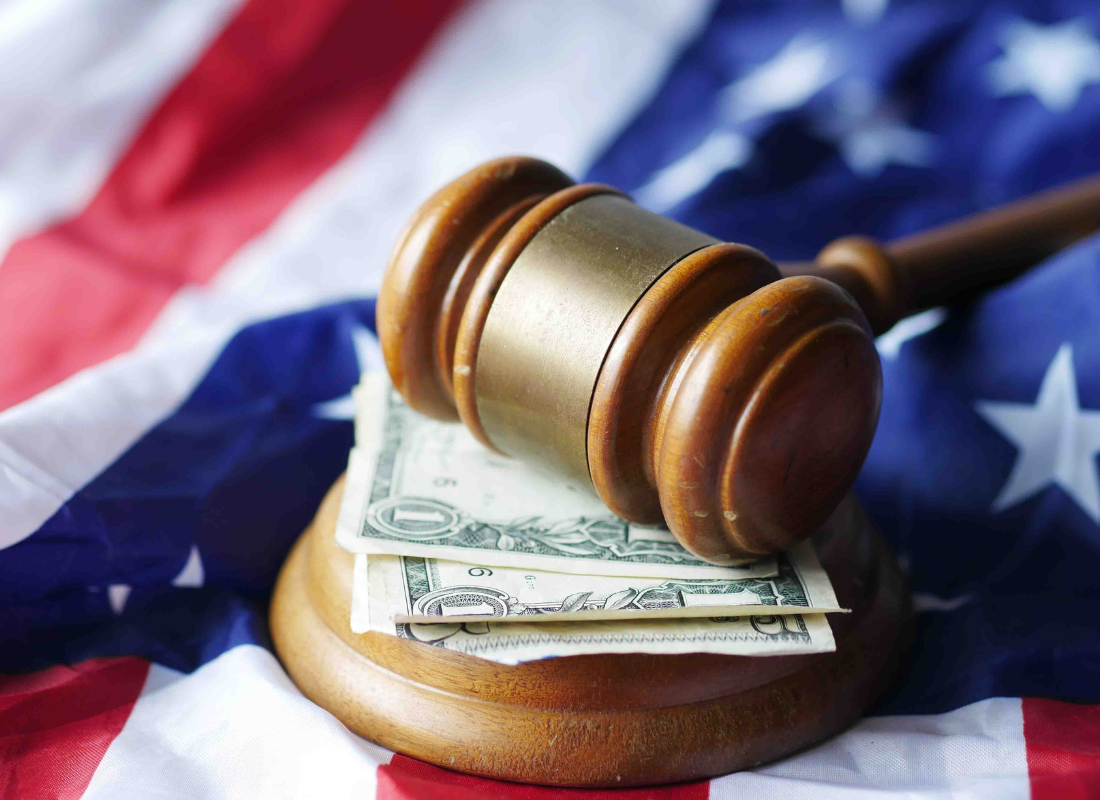PPP2 and Moore: Measures of the Consolidated Appropriations Act
Originally published on January 14, 2021
Updated on November 20th, 2024
The COVID-19 vaccine isn’t the only shot in the arm for 2021. The Consolidated Appropriations Act (CAA) signed into law late last year includes $325 billion in additional Paycheck Protection Program funding. This critical measure will help small businesses and more across the nation stay afloat as the pandemic continues.
What specifically does this mean for your organization? James Moore partners Mike Sibley and Erin Spiwak discussed the latest PPP developments in a recent webinar. Here’s what we know.
Deductibility of PPP-Covered Expenses
Perhaps the biggest development on the PPP front is the decision to allow loan recipients to deduct expenses paid for by loan funds.
“The CARES Act originally said that the loan that you received for the first round of PPP, when it was forgiven, was not included as income,” explained Spiwak. “The IRS came back and said, ‘We agree with that, but that also means the expenses that you used the loan for are not deductible’—which inherently made the forgiveness taxable.”
While this was never the intention of the program, it caused a great deal of unrest. Expenses covered by PPP loans are the types generally deductible, and many small businesses rely on these deductions to keep their tax obligations low. The American Institute of Certified Public Accountants (AICPA) fought on behalf of accountants and their clients to fix this issue. With the CAA, this issue is resolved and the expenses are now deductible in the year paid or incurred.
Note that this decision is effective as of the date of the CARES Act, which was passed last spring. This means it applies to all PPP loans from both the first and second rounds.
PPP2: The Second Round
The second draw of PPP loans has many of the same employer requirements as the first. However, the employee maximum is dropped from 500 to 300 per location. Your organization must also have a reduction of revenues equal to 25% of gross receipts in any 2020 calendar quarter as compared to the same quarter in 2019. (Alternatively, you can compare all of 2020 to 2019 for an overall 25% reduction in gross receipts.)
You can apply for the second round even if you received a PPP loan in the first round, as long as you’ve already used up those funds. Typically, the PPP requires businesses to be in operation as of Feb. 15, 2020. However, there are other provisions that could allow you to be eligible if you started later. Check with your CPA if you fall in this category.
Loan Terms
Loans are calculated as two and a half times your average monthly payroll costs. The maximum loan amount is $2 million (as opposed to $10 million in the first round). Note that gross wages includes not only salary but also the employer retirement contributions and portions of health, dental and other insurance. You can choose a loan period between eight and 24 weeks.
PPP2 also introduces some industry-specific guidelines. Restaurants and hotels that fall under the NAICS code 72 can now receive loans three and a half times their monthly payroll costs. Seasonal employers can look at any 12-week period between Feb. 15, 2019 and Feb. 15, 2020 when examining payroll costs. (More information on the definition of seasonal employer is included later.)
“That’s a recognition of industries that have been hit very, very hard through this process,” said Sibley. “They want to try to keep them going.”
Additionally, the second round specifically sets aside $25 billion for borrowers with 10 or fewer employees or loans less than $250,000 in low income areas. Said Sibley, “They are trying to learn their lesson from the first time around to make sure that the smallest businesses, and those in the hardest hit areas—low-income areas—have some set asides.”
The deadline for applications on all PPP loans is March 31, 2021.
Never taken a PPP loan? You can still be a first-draw borrower.
If you never took out a first-draw PPP loan, you can still go by the initial guidelines of the program. This means the 500-employee limit instead of 300, $10 million cap instead of $2 million, etc.
“We want to encourage that if you didn’t take it and now you wish you had, or you think you’re still eligible, the first draw is eligible under this second round,” said Spiwak. “And it is not under the second-round rule, so you do not have to share the reduction in revenue. You just have to meet the first draw rules with 500 or less employees, economic uncertainty, and the payroll cost.”
Eligibility for the first draw has expanded to include 501(c)(6) and destination marketing organizations with 300 or fewer employees, such as chambers of commerce, economic development organizations and tourism boards. (These applicants are subject to lobbying thresholds when it comes to receipts and activities.) Housing cooperatives and certain news organizations are also now eligible.
Additional Provisions on PPP Loans
According to PPP2 Schedule F, farmers and ranchers can now use gross income instead of net income to calculate their loan amounts. (This has not changed for Schedule C employers or the self-employed.) This is retroactive to include loans already taken out, so those falling under this category can recalculate to receive a larger loan amount.
The CCA also defines a seasonal employer as an employer meeting one of two conditions:
- Operates for no more than seven months in a year
- Earned no more than one third of its receipts in any six months in the prior calendar year
Finally, borrowers who returned all or part of their original loan can reapply for the difference if they have not received forgiveness for it.
PPP2 Ineligibility
Despite the expansion of the Paycheck Protection Program, there are still entities not eligible for these loans. They include:
- Businesses not in operation as of Feb. 15, 2020
- Entities receiving Shuttered Venue Operator Grants
- Publicly traded businesses
- Lobbying organizations
- Entities affiliated with entities in the People’s Republic of China
- Those registered under the Foreign Agents Registration Act
- The president or vice president of the United States, head of an executive department in the administrations, members of congress and their spouses
- Entities that have already received a second draw loan
- An entity that is permanently closed
Loan Forgiveness Eligibility
The costs eligible for loan forgiveness have expanded fairly substantially with the CAA. We still have the same covered costs as the first round: mortgage interest, rent and utility payments. With PPP2, the scope of forgiveness eligibility has increased to include several more expenses.
- Worker protection expenditures: This includes personal protective equipment (PPE) such as masks, plexiglass walls and other costs to help comply with federal safety guidelines.
- Supplier costs: Expenses to suppliers that are essential to your operations (according to Treasury Department guidelines) are eligible for loan forgiveness.
- Operations expenditures: This means software used to facilitate and track your accounting, purchasing, human resources and other operations.
- Property damage costs: With public disturbances occurring over the past year, some businesses sustained damage not covered by insurance. These costs can be paid with PPP loans and are eligible for forgiveness.
This list applies to both original and PPP2 loans unless your forgiveness has already been processed. As with the first round, at least 60% of the costs must be to cover your payroll. We expect further clarification on these guidelines in the coming weeks and months.
Simplified Loan Forgiveness
If your loan is for $150,000 or less, it’s now a much simpler process to ask for forgiveness. The new application is a one-page form that attests you are following all PPP requirements of loan amount, number of employees and record retention.
Keep in mind, however, that this form has not yet come out. Until it does, you can still use one of the existing forms (3508 or 3508EZ).
“If you have (applied for) or are in the process of applying for forgiveness now, I don’t know that I would wait for this new form to come out,” said Spiwak. “The SBA has 24 days to prepare the form, and then obviously your lender will have to have that available on the portal to do it. If you’re already 90% there, I would just go ahead and apply using the EZ form since you have the documentation anyway, then that way you can have it forgiven sooner rather than later.”
Preparing Your PPP2 Loan Application
Your first step is to speak with your business tax CPA. This is especially important if you have unique circumstances. Then gather your documentation for eligibility and amounts.
“Clients are already thinking about this,” said Sibley. “We’ve had a number of them reach out to us and give us summaries of revenue by quarter and things like that. So I would start gathering those documents, your payroll documents… retirement plan and group health and all those different insurances. Start gathering those documents that can be used to help substantiate the loan amount.”
Then look at your lender options. The AICPA has helped establish an online portal to collect, complete and submit applications through SBA-approved lenders; James Moore has access to this if you need assistance applying with a lender. You can also work with our CPA to prepare your application package to take to your current lender.
Regardless of how you do it, now is the time to start with your PPP2 loan application.
All content provided in this article is for informational purposes only. Matters discussed in this article are subject to change. For up-to-date information on this subject please contact a James Moore professional. James Moore will not be held responsible for any claim, loss, damage or inconvenience caused as a result of any information within these pages or any information accessed through this site.
Other Posts You Might Like

